Posted on October 24th, 2013 by Mary Lord
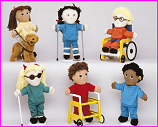 Students in grades 6 to 8 gain an understanding of physical limitations and the biomedical engineering design process by performing a variety of tasks without using their thumbs, eyes, or legs, then working in teams to create or improve and adaptive device.
Students in grades 6 to 8 gain an understanding of physical limitations and the biomedical engineering design process by performing a variety of tasks without using their thumbs, eyes, or legs, then working in teams to create or improve and adaptive device.
Read More
Filed under: Class Activities, Grades 6-8, Grades 6-8, Grades 9-12, Grades 9-12, Lesson Plans | Comments Off on Seeing the World Through a Different Lens
Tags: adaptive technologies, assistive technologies, bioengineering, biomechanical engineering, Class Activities, Grades 6-8, Lesson Plan, Mechanical engineering, Prosthetics, students with disabilities
Posted on September 25th, 2013 by Mary Lord
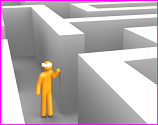 In this activity, students working in pairs learn basic computer programming and software engineering concepts by building an obstacle course, then steering a blindfolded friend through it by using a series of commands. They re-run the maze to improve on their “program.”
In this activity, students working in pairs learn basic computer programming and software engineering concepts by building an obstacle course, then steering a blindfolded friend through it by using a series of commands. They re-run the maze to improve on their “program.”
Read More
Filed under: Class Activities, Grades 6-8, Grades 6-8, Grades K-5, Grades K-5, Lesson Plans | Comments Off on Program a Friend
Tags: Class Activities, coding, Computer Programming, Grades 6-8, Grades K-5, Lesson Plans, Mathematics, Robotics, software engineering, Technology
Posted on August 29th, 2013 by Mary Lord
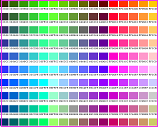 Computer science has the highest pay for new college graduates, twice the national average job growth of more than double the national average, and applications that stretch from rock music to medicine. Yet 9 in 10 schools don’t teach programming. Code.org hopes to change that with a host of free resources to get kids as young as four creating websites and apps.
Computer science has the highest pay for new college graduates, twice the national average job growth of more than double the national average, and applications that stretch from rock music to medicine. Yet 9 in 10 schools don’t teach programming. Code.org hopes to change that with a host of free resources to get kids as young as four creating websites and apps.
The answer is computer programming, and advocates from Microsoft founder Bill Gates to former president Bill Clinton are pushing to include it in the K-12 curriculum.
Far from being complicated algorithms only a geek could master, code writing can be learned by just about anyone — even four-year-olds. Code.org has compiled a host of websites, courses, and other free resources to help students hone programming skills from building websites to creating phone apps. There also are tips for using code writing and programming projects and activities in math or science classes to cover content standards.
Read More
Filed under: For Teachers, Grades 6-8, Grades 6-8, Grades 9-12, Grades 9-12, Grades K-5, Grades K-5, K-12 Outreach Programs, Lesson Plans, Special Features, Web Resources | Comments Off on Code Calling
Tags: code writing, code.org, Computer Programming, Computer Science, Curriculum, Internet Resources, Lesson Plan, Resources for Teachers, STEM education, Teacher Resources, Technology for Learning, Website
Posted on July 31st, 2013 by Mary Lord
 In this first of eight activities, students in grades 6 – 8 learn about the engineering design process and earth science by beginning to design an underground cavern that can shelter people for one year after an asteroid strike makes Earth uninhabitable.
In this first of eight activities, students in grades 6 – 8 learn about the engineering design process and earth science by beginning to design an underground cavern that can shelter people for one year after an asteroid strike makes Earth uninhabitable.
Read More
Filed under: Class Activities, Grades 6-8, Grades 6-8, Lesson Plans | Comments Off on Asteroid Impact!
Tags: asteroid, Class Activities, Common Core State Mathematics Standards, Disaster relief, Earth Science, Engineering Design, Geology, Grades 6-8, ITEEA, Lesson Plans, Next Generation Science Standards, shelter, Space
Posted on June 19th, 2013 by Mary Lord
 In this activity, teams of students in grades K-12 learn about the history and engineering behind Ferris wheels by constructing a working model using pasta, glue, and teabags.
In this activity, teams of students in grades K-12 learn about the history and engineering behind Ferris wheels by constructing a working model using pasta, glue, and teabags.
Read More
Filed under: Class Activities, Grades 6-8, Grades 6-8, Grades 9-12, Grades 9-12, Grades K-5, Grades K-5, Lesson Plans | Comments Off on Build a Big Wheel
Tags: Class Activities, Ferris wheel, Grades 6-8, Grades 9-12, Grades K-5, London eye, motions and forces, Physics
Posted on May 25th, 2013 by Mary Lord
 In this activity, students in grades 6 to 8 learn about the engineering design process and the physical principles of buoyancy by working together to build a boat out of straws and plastic wrap that can hold 25 pennies for at least 10 seconds before sinking.
In this activity, students in grades 6 to 8 learn about the engineering design process and the physical principles of buoyancy by working together to build a boat out of straws and plastic wrap that can hold 25 pennies for at least 10 seconds before sinking.
Read More
Filed under: Class Activities, Grades 6-8, Grades 6-8, Grades K-5, Grades K-5, Lesson Plans | Comments Off on Watercraft
Tags: boats, buoyancy, flotation, forces, Marine engineering, ocean engineering, sailboat
Posted on March 18th, 2013 by Mary Lord
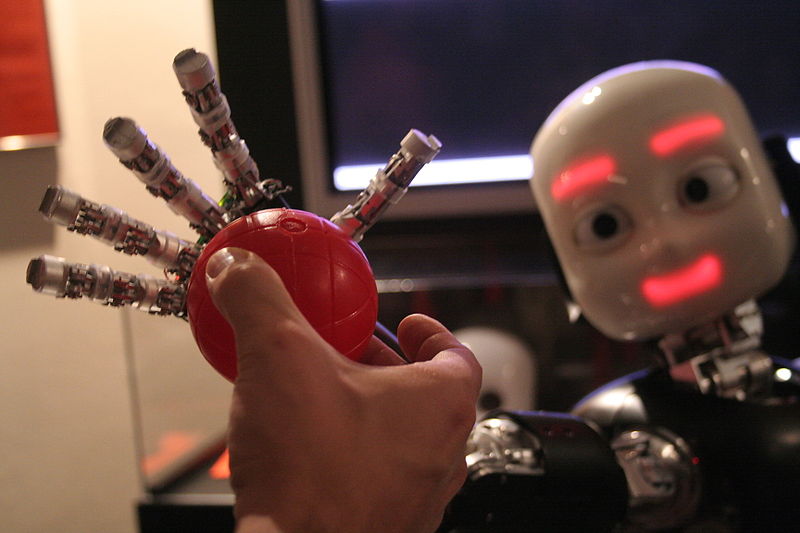 In this activity, students in grades 5 to 12 learn about accuracy, precision, and simple machines by working in teams to design and build a robotic basketball “player” that can nail a free-throw shot three times in a row.
In this activity, students in grades 5 to 12 learn about accuracy, precision, and simple machines by working in teams to design and build a robotic basketball “player” that can nail a free-throw shot three times in a row.
Read More
Filed under: Class Activities, Grades 6-8, Grades 6-8, Grades 6-8, Grades 9-12, Grades 9-12, Grades 9-12, Lesson Plans | 2 Comments »
Tags: accuracy, basketball, biomechanical engineering, biomechanics, catapult, Class Activities, Engineering, lever, Mathematics, percentages, Physics, precision, projectile, Robotics, simple machines, Sports Engineering, statistics
Posted on October 16th, 2012 by Mary Lord
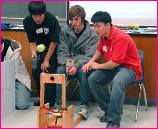 Students in grades 1 to 6 follow the engineering design process to build and test a catapult that launches projectiles, such as marshmallow “pumpkins.” They then make changes to improve their launcher’s aim and distance it can hurl the projectile.
Students in grades 1 to 6 follow the engineering design process to build and test a catapult that launches projectiles, such as marshmallow “pumpkins.” They then make changes to improve their launcher’s aim and distance it can hurl the projectile.
Read More
Filed under: Class Activities, Grades 6-8, Grades K-5, Lesson Plans | Comments Off on Target Practice: Pumpkin Launcher
Tags: catapult, Design, Elementary Education, Engineering Design, forces and motion, Halloween, levers, motions and forces, Physics, simple machines
Posted on September 17th, 2012 by Mary Lord
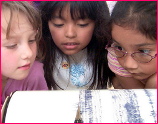 Students in grades 3 – 12 explore how the development of seismographs has helped save lives worldwide by working in teams to design their own seismograph from everyday items, test its ability to record a simulated classroom earthquake, evaluate their results, and report to the class.
Students in grades 3 – 12 explore how the development of seismographs has helped save lives worldwide by working in teams to design their own seismograph from everyday items, test its ability to record a simulated classroom earthquake, evaluate their results, and report to the class.
Read More
Filed under: Grades 6-8, Grades 9-12, Grades K-5, Lesson Plans | Comments Off on Lesson: Shake It Up with Seismographs
Tags: earthquake, Earthquake materials, Seismology
 Students in grades 6 to 8 gain an understanding of physical limitations and the biomedical engineering design process by performing a variety of tasks without using their thumbs, eyes, or legs, then working in teams to create or improve and adaptive device.
Students in grades 6 to 8 gain an understanding of physical limitations and the biomedical engineering design process by performing a variety of tasks without using their thumbs, eyes, or legs, then working in teams to create or improve and adaptive device.








 In this activity, students working in pairs learn basic computer programming and software engineering concepts by building an obstacle course, then steering a blindfolded friend through it by using a series of commands. They re-run the maze to improve on their “program.”
In this activity, students working in pairs learn basic computer programming and software engineering concepts by building an obstacle course, then steering a blindfolded friend through it by using a series of commands. They re-run the maze to improve on their “program.” Computer science has the highest pay for new college graduates, twice the national average job growth of more than double the national average, and applications that stretch from rock music to medicine. Yet 9 in 10 schools don’t teach programming. Code.org hopes to change that with a host of free resources to get kids as young as four creating websites and apps.
Computer science has the highest pay for new college graduates, twice the national average job growth of more than double the national average, and applications that stretch from rock music to medicine. Yet 9 in 10 schools don’t teach programming. Code.org hopes to change that with a host of free resources to get kids as young as four creating websites and apps. In this first of eight activities, students in grades 6 – 8 learn about the engineering design process and earth science by beginning to design an underground cavern that can shelter people for one year after an asteroid strike makes Earth uninhabitable.
In this first of eight activities, students in grades 6 – 8 learn about the engineering design process and earth science by beginning to design an underground cavern that can shelter people for one year after an asteroid strike makes Earth uninhabitable. In this activity, teams of students in grades K-12 learn about the history and engineering behind Ferris wheels by constructing a working model using pasta, glue, and teabags.
In this activity, teams of students in grades K-12 learn about the history and engineering behind Ferris wheels by constructing a working model using pasta, glue, and teabags. In this activity, students in grades 6 to 8 learn about the engineering design process and the physical principles of buoyancy by working together to build a boat out of straws and plastic wrap that can hold 25 pennies for at least 10 seconds before sinking.
In this activity, students in grades 6 to 8 learn about the engineering design process and the physical principles of buoyancy by working together to build a boat out of straws and plastic wrap that can hold 25 pennies for at least 10 seconds before sinking. Students in grades 1 to 6 follow the engineering design process to build and test a catapult that launches projectiles, such as marshmallow “pumpkins.” They then make changes to improve their launcher’s aim and distance it can hurl the projectile.
Students in grades 1 to 6 follow the engineering design process to build and test a catapult that launches projectiles, such as marshmallow “pumpkins.” They then make changes to improve their launcher’s aim and distance it can hurl the projectile. Students in grades 3 – 12 explore how the development of seismographs has helped save lives worldwide by working in teams to design their own seismograph from everyday items, test its ability to record a simulated classroom earthquake, evaluate their results, and report to the class.
Students in grades 3 – 12 explore how the development of seismographs has helped save lives worldwide by working in teams to design their own seismograph from everyday items, test its ability to record a simulated classroom earthquake, evaluate their results, and report to the class.